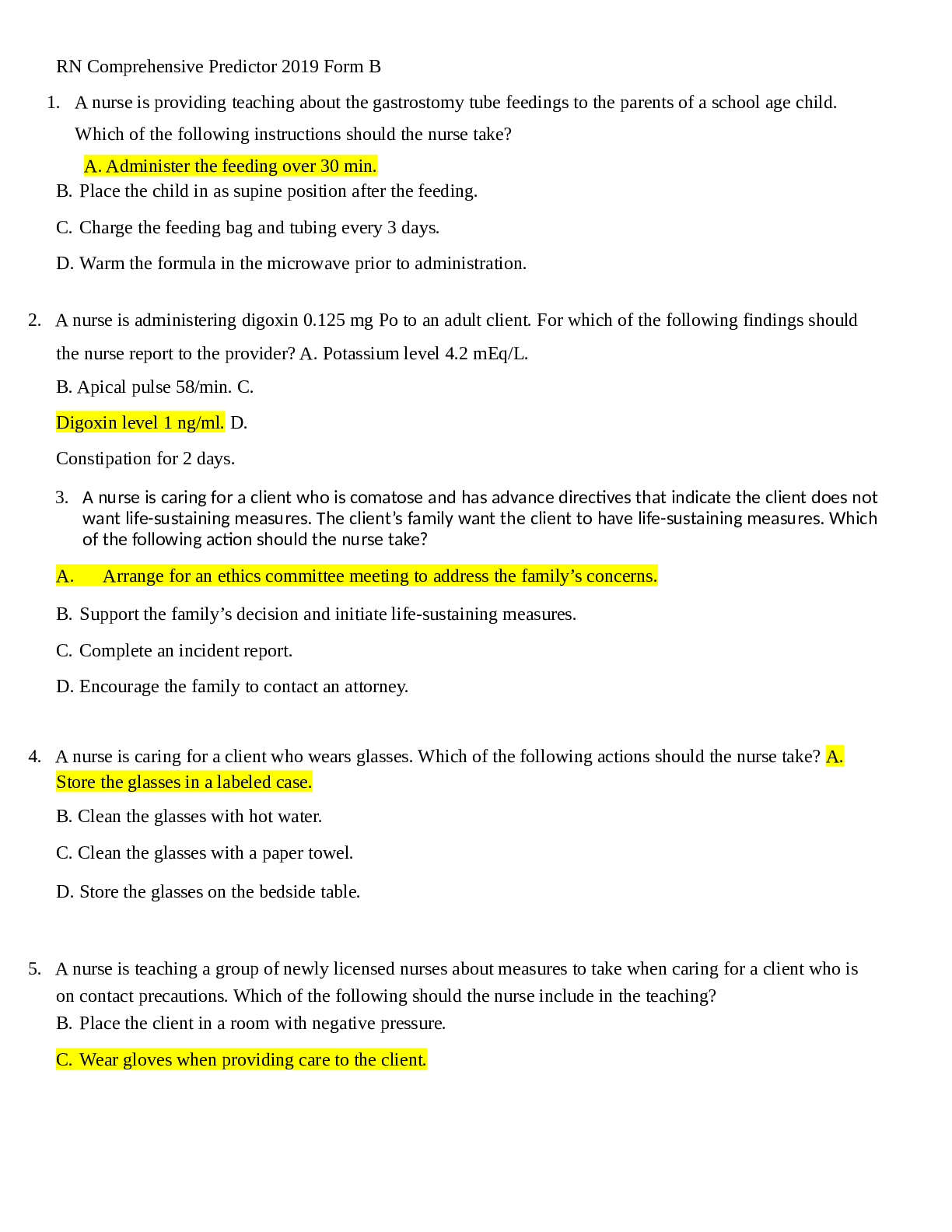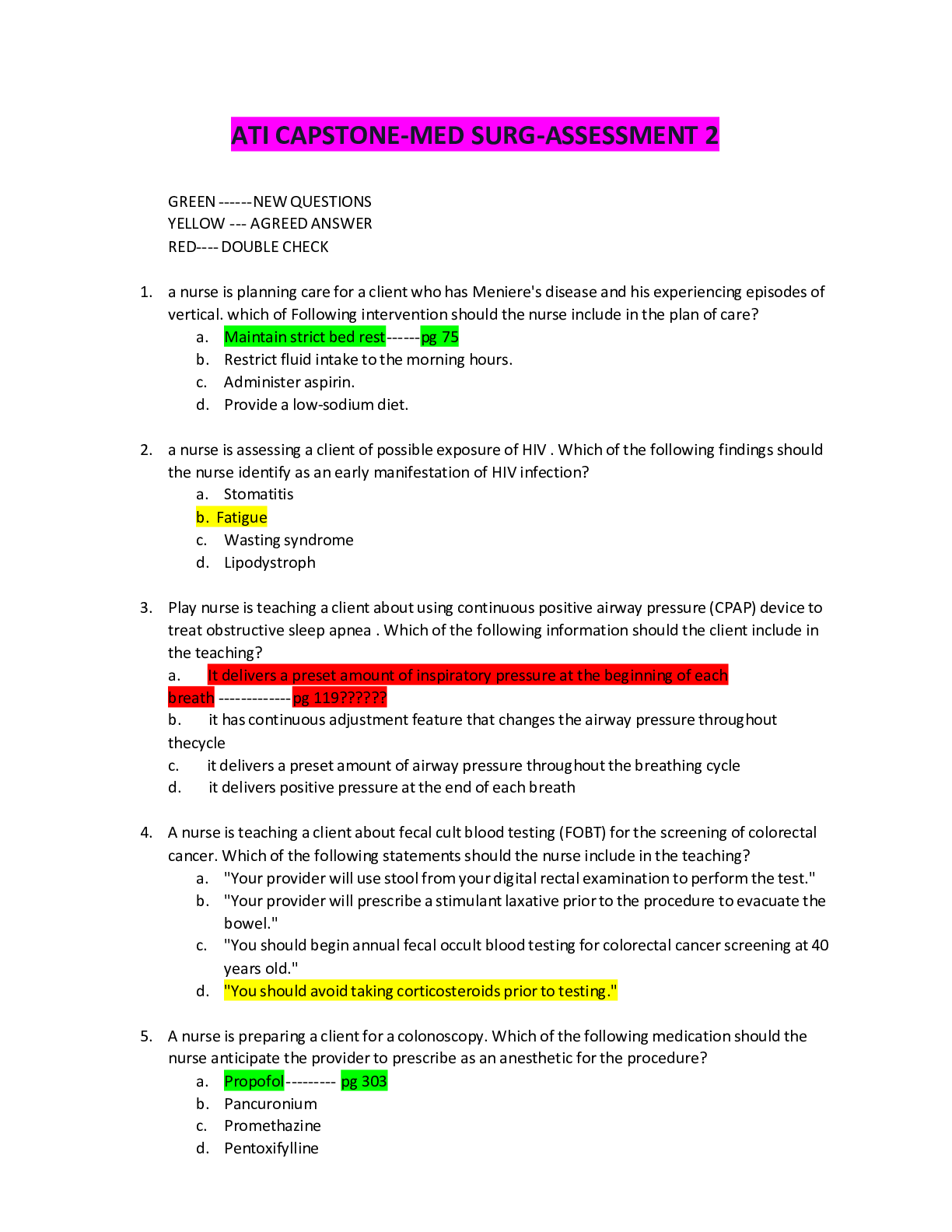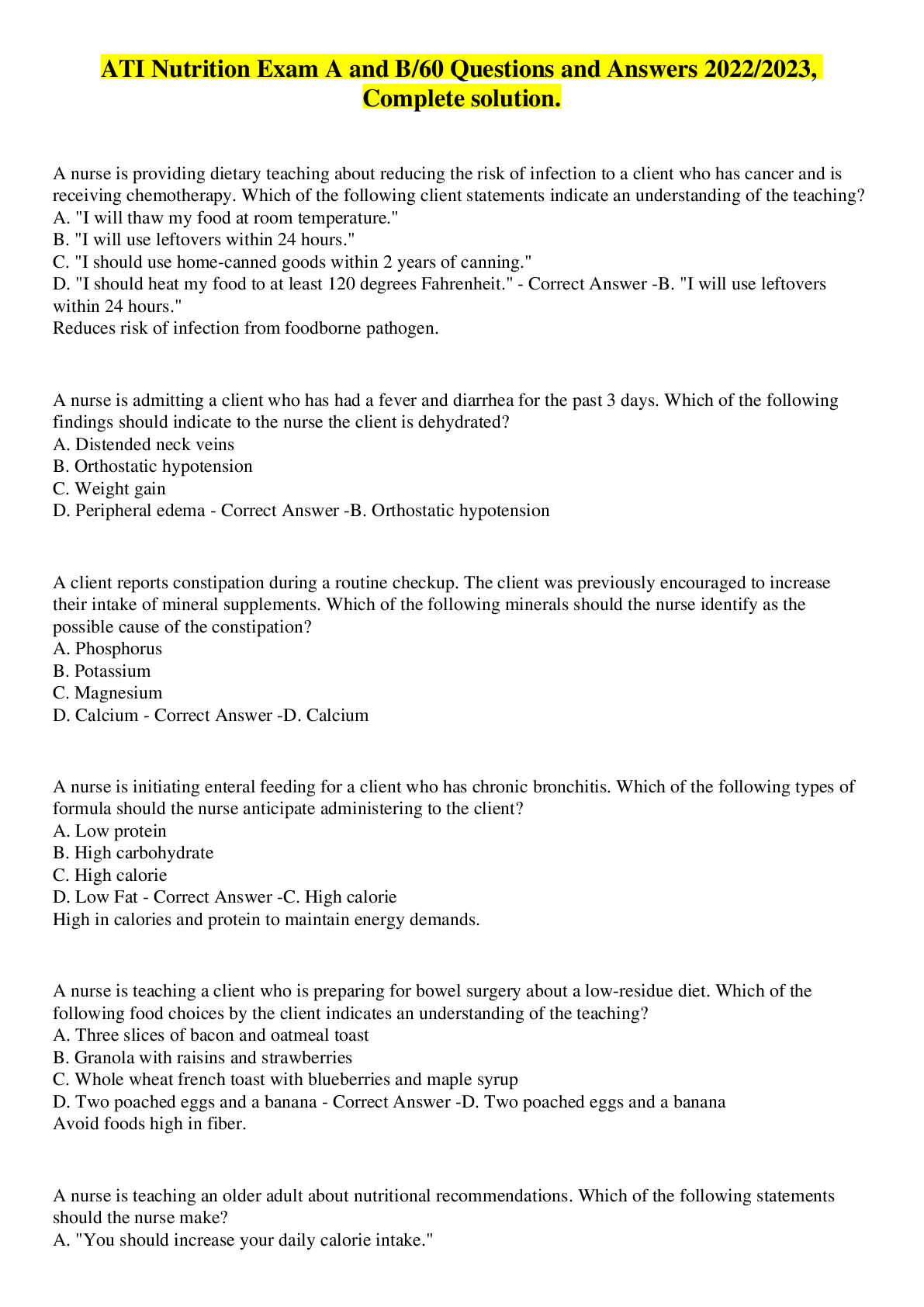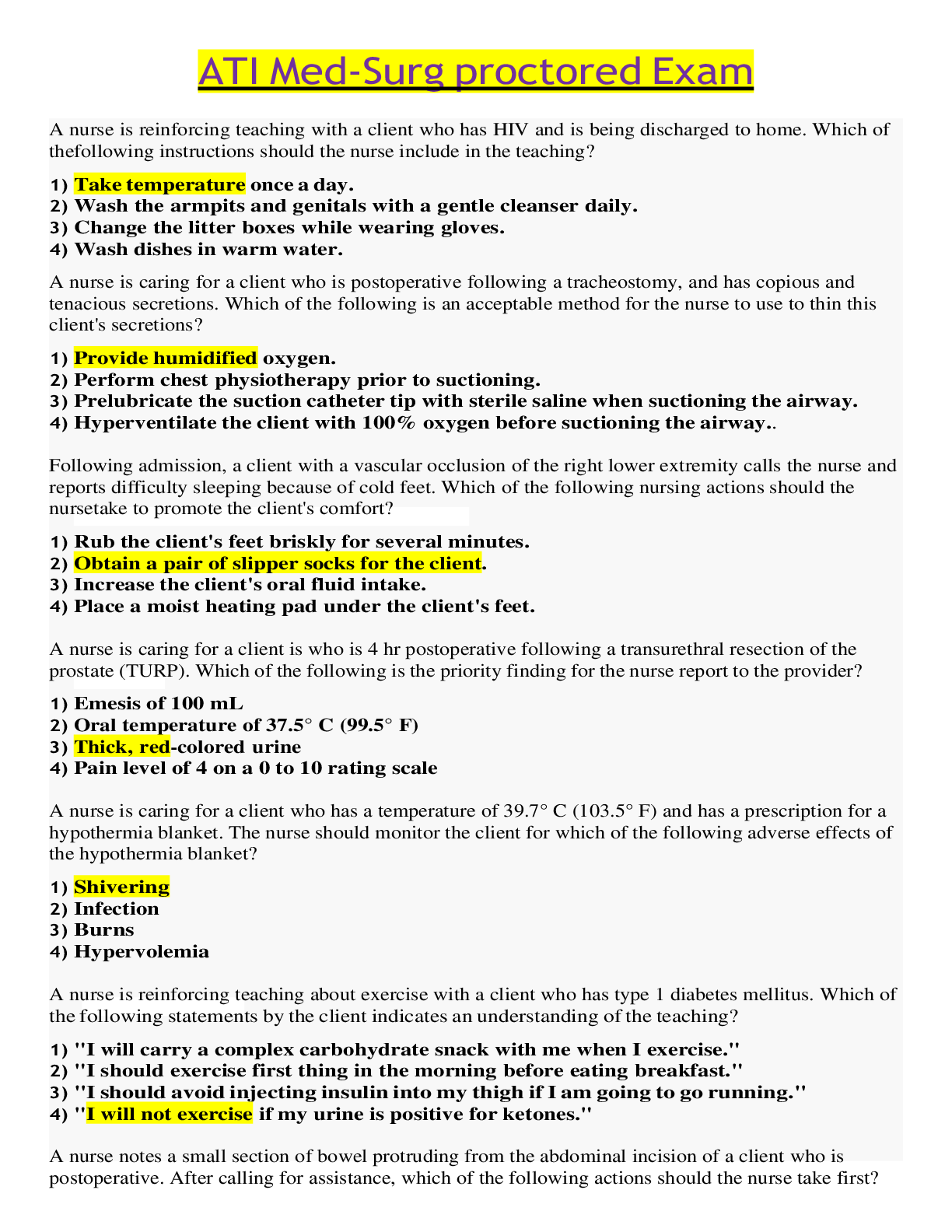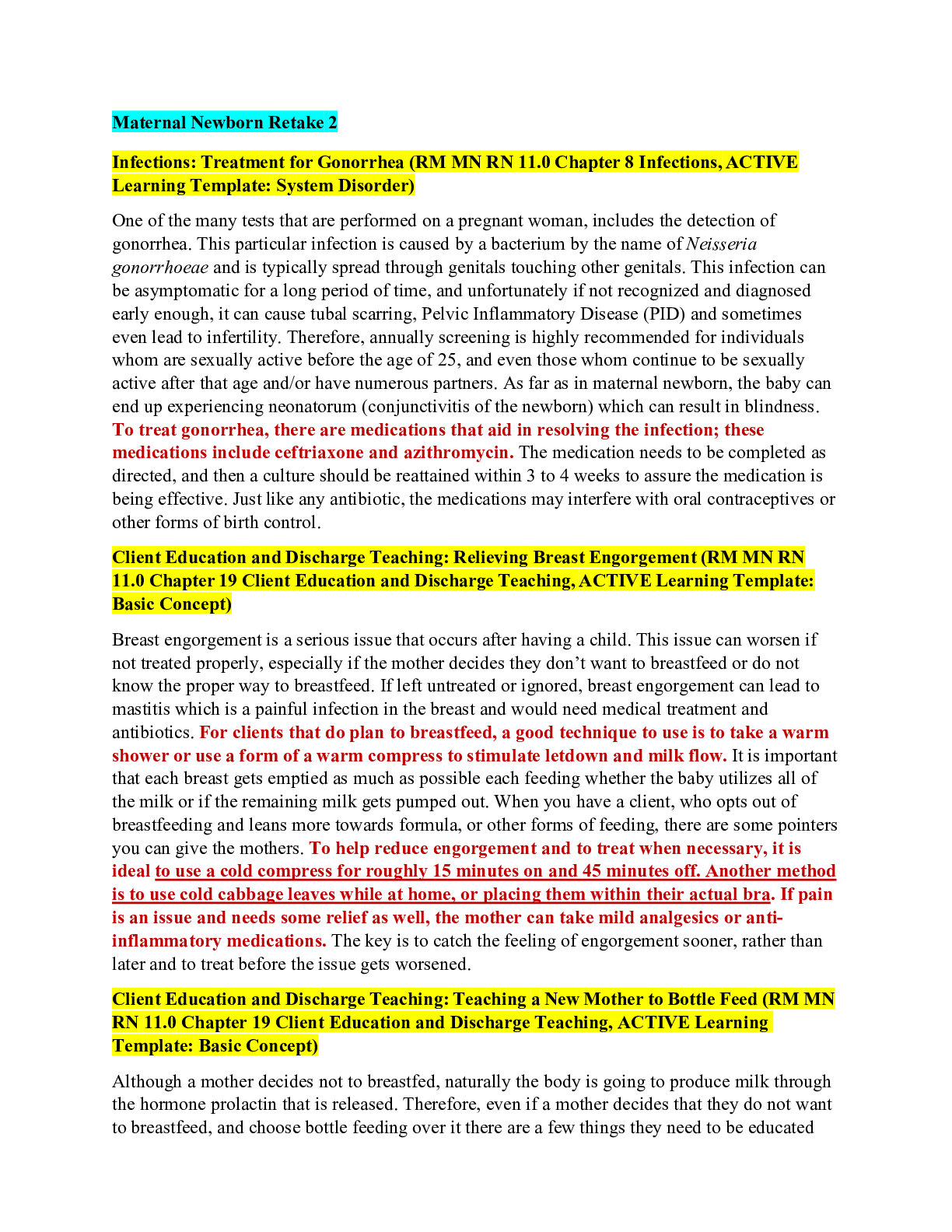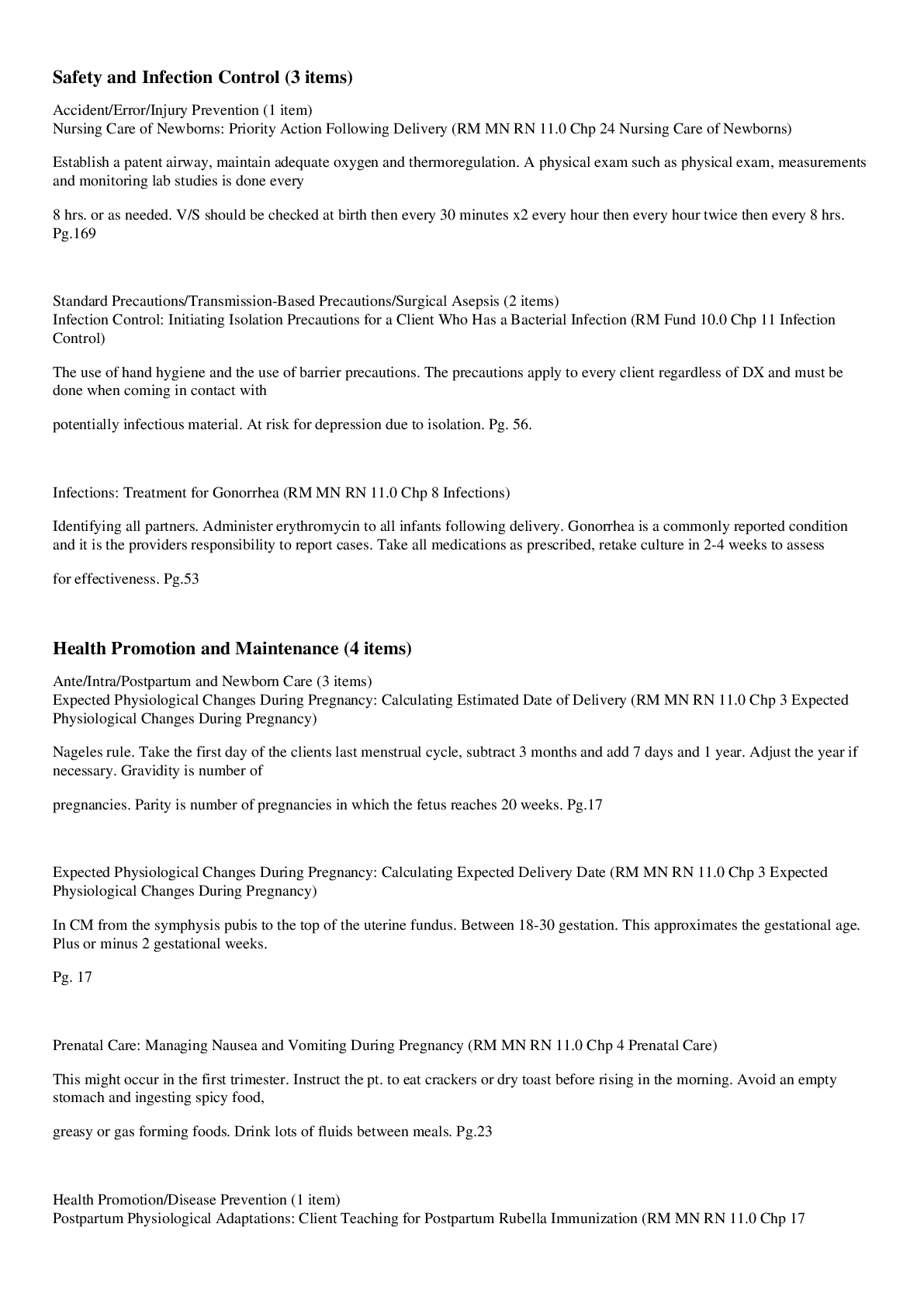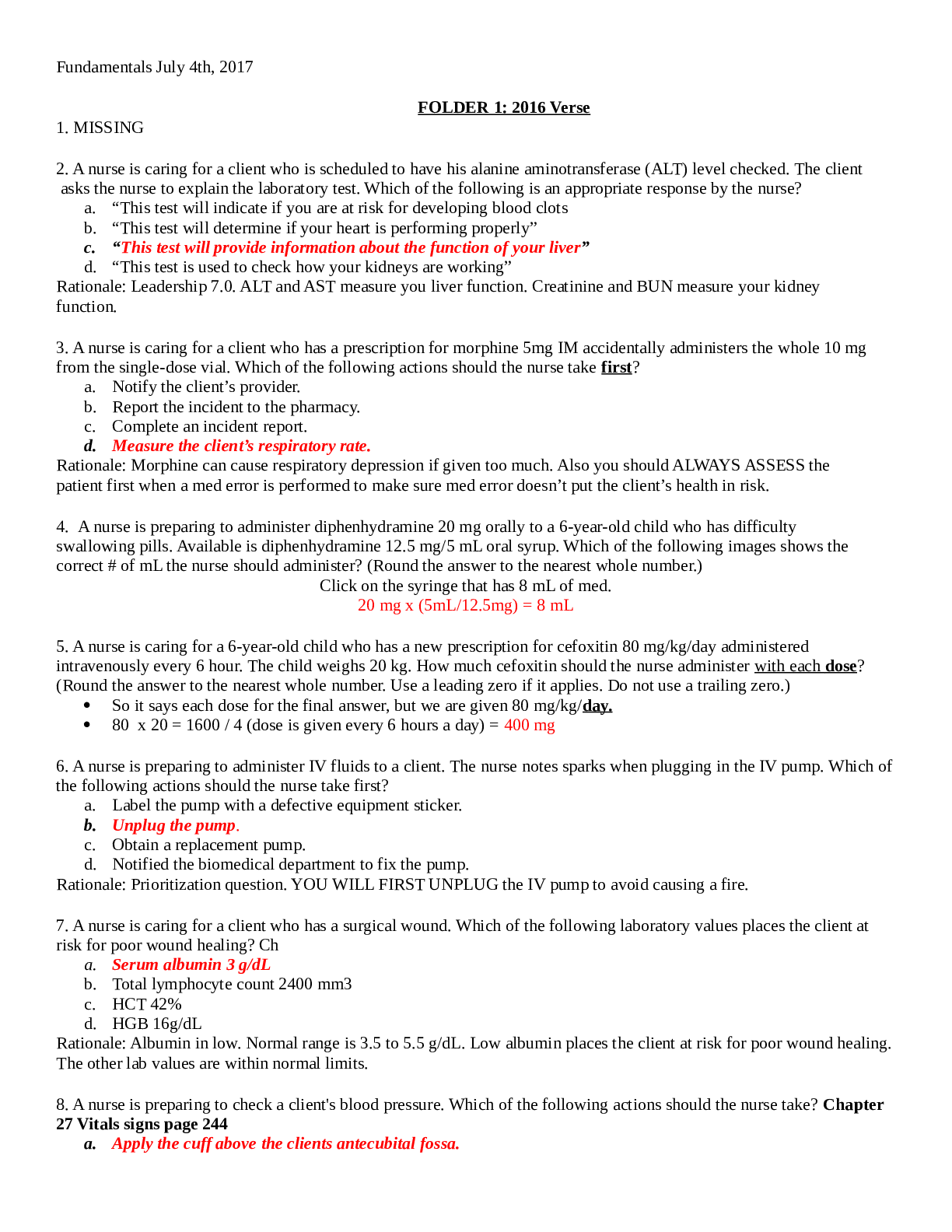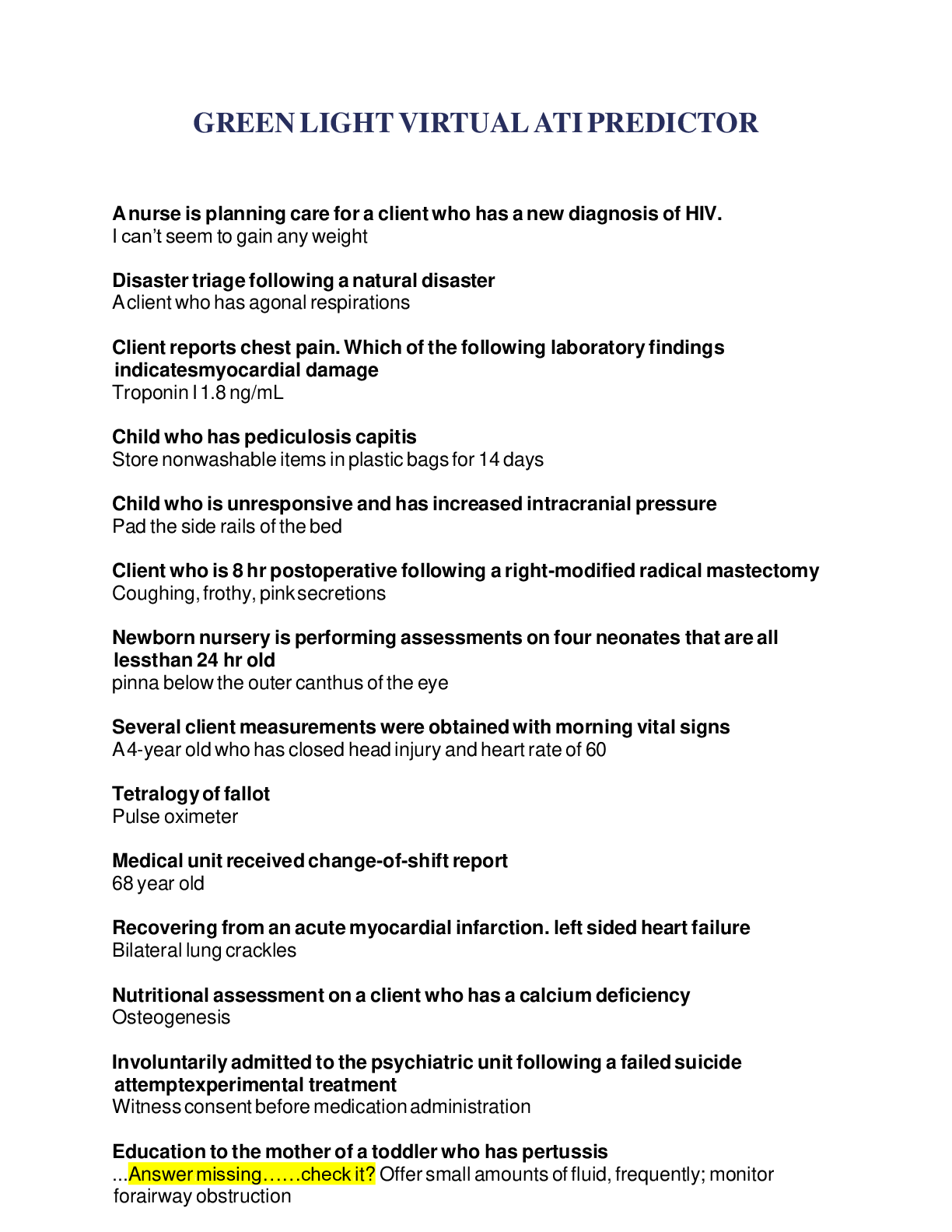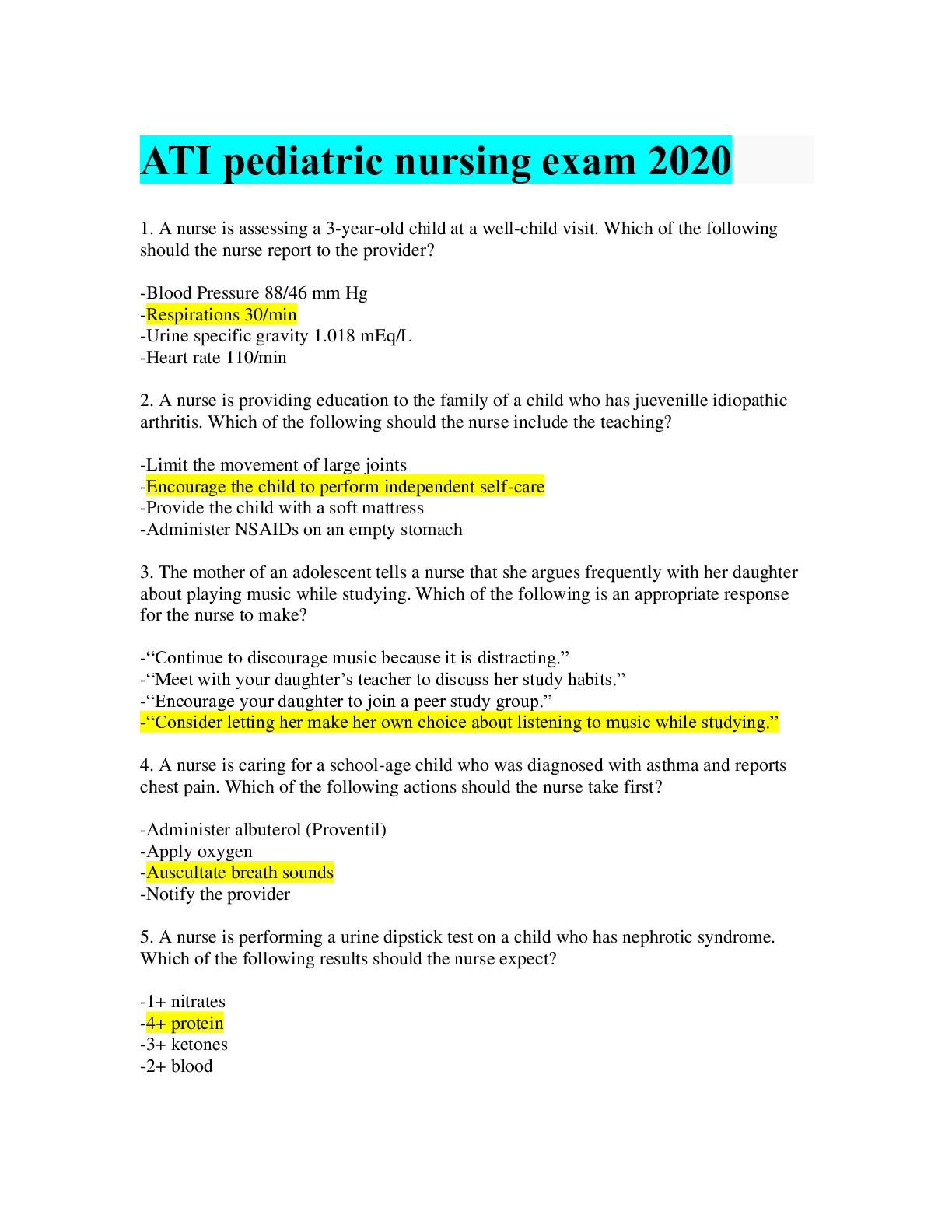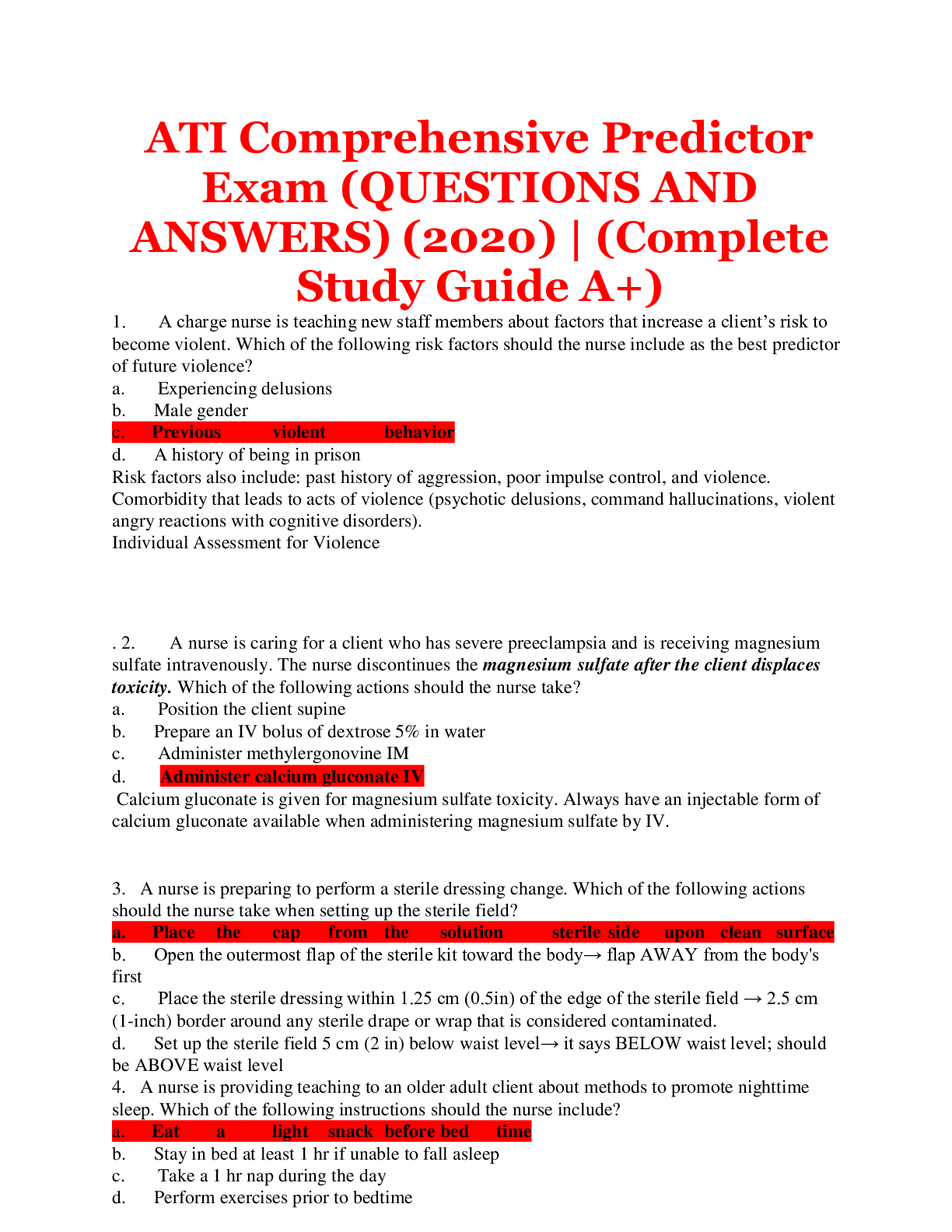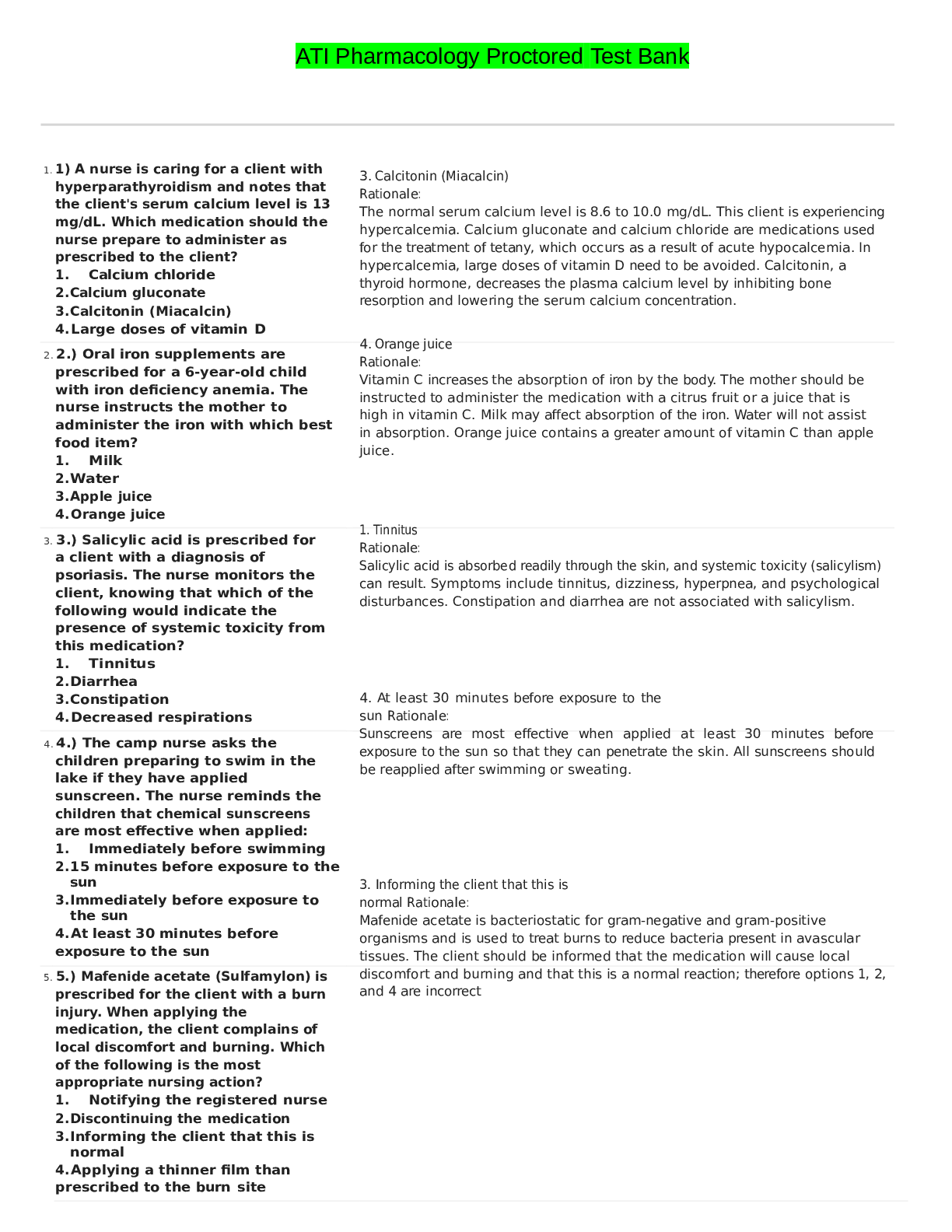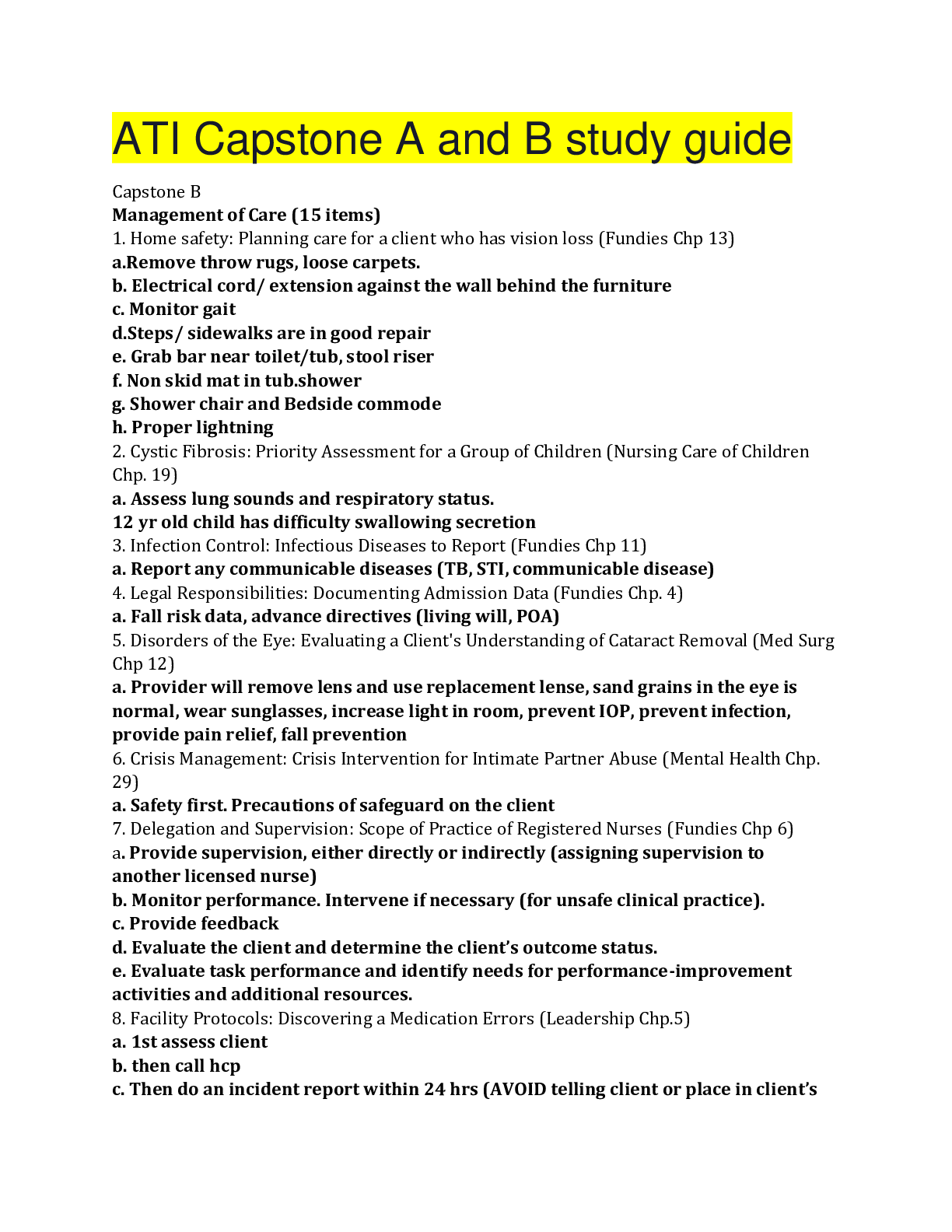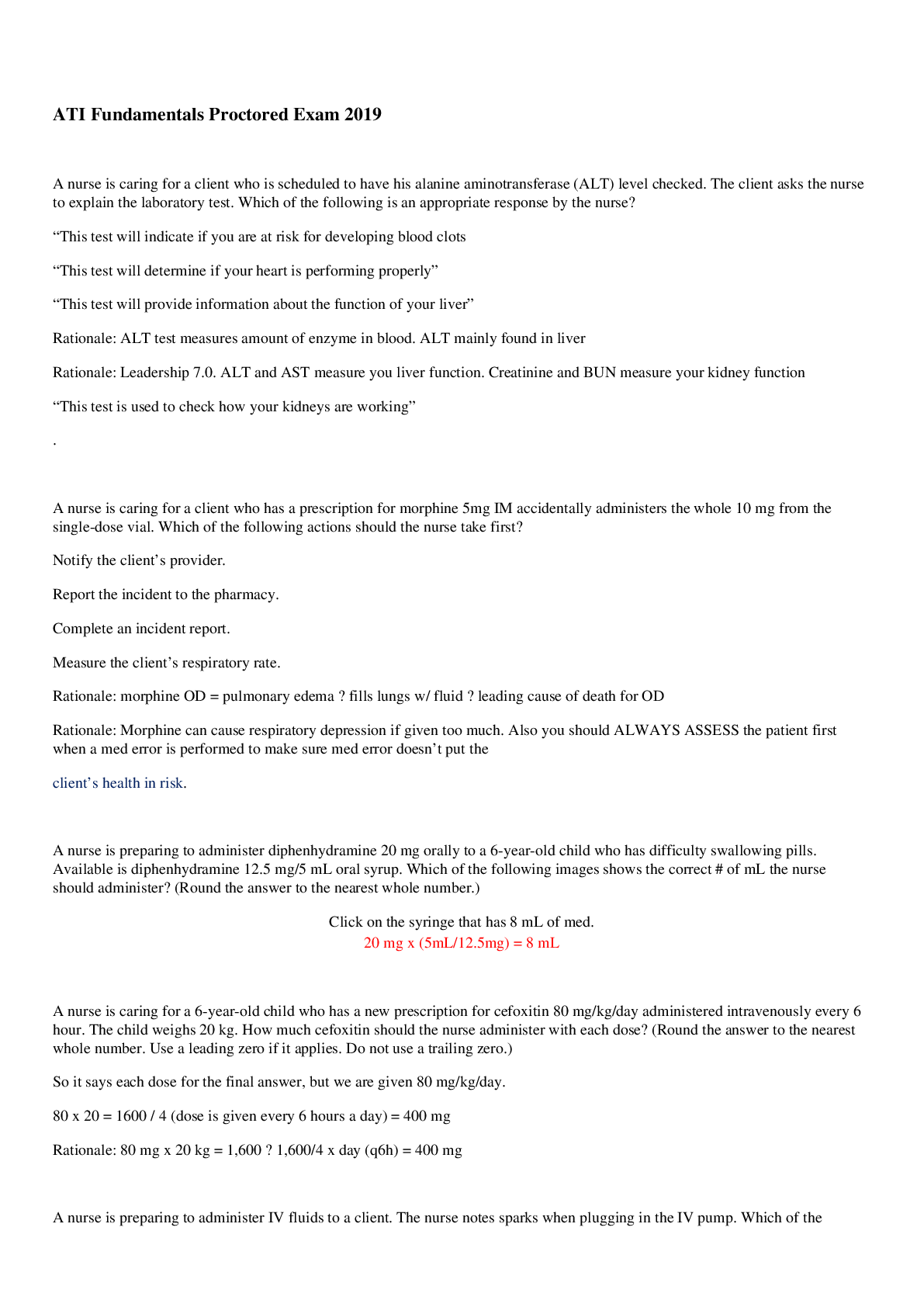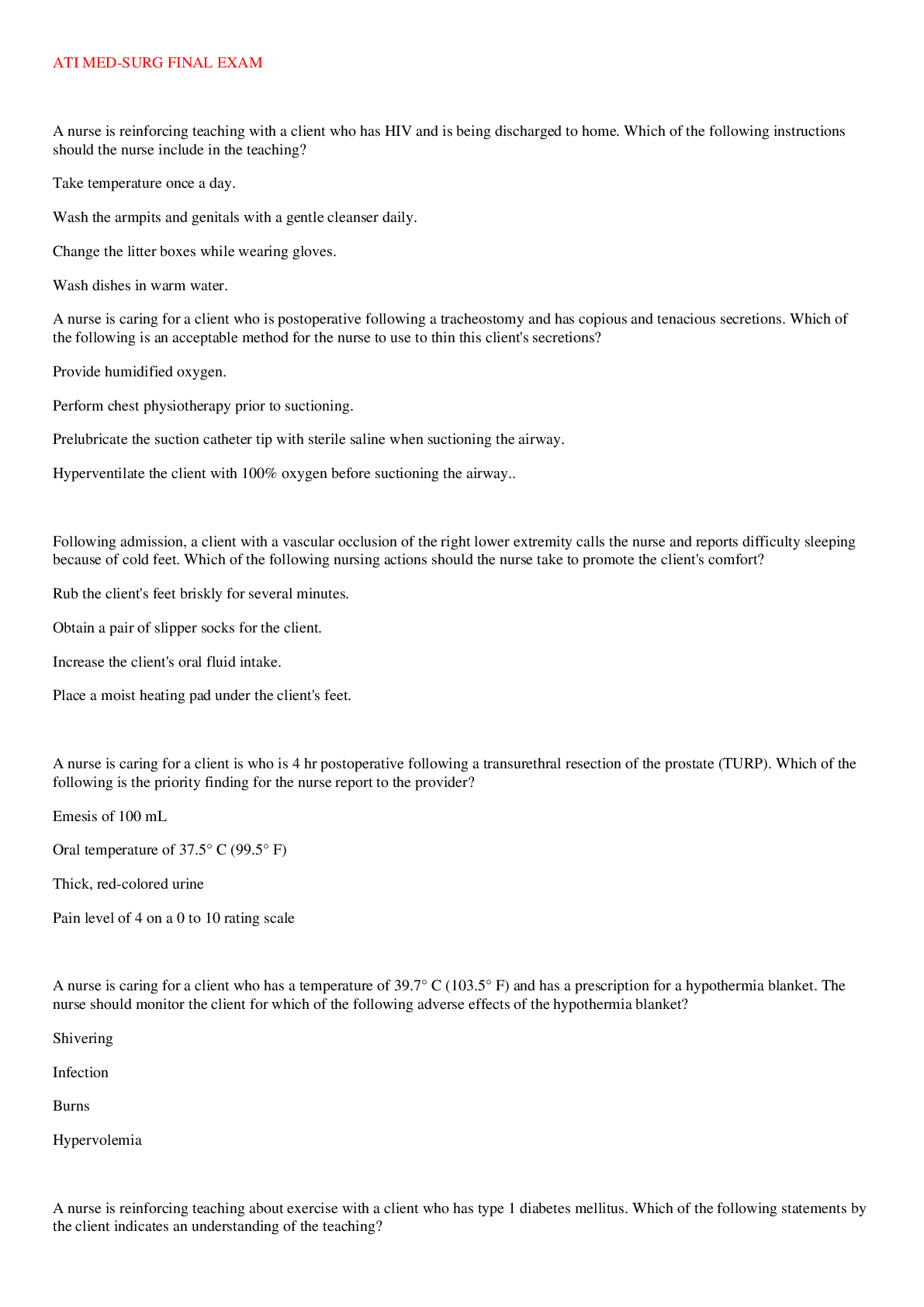*NURSING > QUESTIONS and ANSWERS > ATI Proctor Nutrition guide (2020) (All)
ATI Proctor Nutrition guide (2020)
Document Content and Description Below
ATI proctor, Nutrition Chapter 1: Carbohydrate, protein and fat 3 main nutrients. Carbs: 45-65% of daily calories function: energy, regulate fat, cardiac and cns system, protein metabolism. Glycogen: ... stored carb in the liver and muscle and it release between the meals to regulate the Blood glucose level. Carbs 4 calories per gram per energy * Fiber intake 25gr women, for M 38gr per day * Protein 10-35% daily calories, 0.8 gr per kg body weight, tissue building, immune function, neutral nitrogen balance. Wound healing is important. Complete protein: all 9 amino acids, animal sources and soy Incomplete: 2 different one together is complete like rice plus beans. Protein 4 calories per gram per energy. Fat lipids: 20-35% of daily calories. Les that 10 sutured fat, ideally 7% Function: store energy, padding insulation. Hormone, absorption of fat-soluble vitamin Cholesterol: 200-300 mg/day Fat provides 9 calories/energy If you eat 5 gr of fat how many calories: 45 calories. Vitamins: Fat soluble: A, D, E, K they have risk for toxicity, don’t overdose, CF, celiac and crohns disease Water soluble: Vitamin C and B complex thiamine, niacin, pardaxin, panthocacid, folic, cobalamin: no risk for toxicity, you will pee it out. Vitamin c: iron absorption, tissue building Citrus fruits, tomatoes, green veggie. Deficiency in vitamin C: bleeding, swelling gums and joint pain, during pain and illness take more, during smoking take more B complex: CNS functioning, meats, milk, whole grains, legumes, green leafy veggies. Pregnancy get folic acid. Def B12: pernicious anemia. Vitamin A: vision health, skeletal and soft tissue: orange and yellow fruits, fatty fish, dairy products. Deficiency: xeropthalmia and vision issue Vitamin D: absorption of calcium and phosphorus. Sunlight, Milk, fatty fish and eggs. Deficiency: bone loss Vitamin E: serve as antioxidants: fat containing food, nuts, dark green veggies. Deficiency very rare: muscle pain. Vitamin K: blood clotting and bone maintenance, dark green veggie, carrots deficiency: increase bleeding time. Antidote for Warfarin Electrolytes: Sodium Na: 136-145 normal level. function: fluid balance and nerve and muscle function. Food high in Na: salt and processed food. Hyper: hypervolemia and HTN Hypo: confusion, muscle cramps, headache, fatigue, NV Potassium K: 3.5-5 normal level. Function: ICF, nerve function, muscle and heart contraction FOOD HIGH IN K: bananas, potatoes, tomatoes, oranges, avocadoes, dark green veggies, dried foods Hyper: dysrhythmias, muscle weakness, NV, confusion Hypo: dysrhythmias, muscle cramps and constipation Chloride Cl: 98-106 is normal level Function: Help with digestion, ICF and ECF. Find in salt Hyper: NV Hypo: muscle cramps, GI upset Calcium CA: 9-10.5 is normal level Function: bone, teeth formation, nerve and muscle function, BP Food: dairy, dark green veggie, fruits Hyper: constipation, decreased DTR, kidney stones, lethargy Hypo: Positive Chvostek and Trousers’, muscle spasm and tingling Magnesium Mg: 1.3-2.1 Function: Nerve, muscle function, bone formation, biochemical reactions Foods: nuts, veggies, whole grain, milk Hyper: NV/ hypotension, muscle weakness, lethargy. Respiratory and cardiac arrest Hypo: increased DTR, dysthymias, seizure, tremors Ph: Phosphorus 3-4.5 is normal level Function: bone and teeth formation Dairy and cheese, dark green veggies, fish and legumes Inverse relationship with calcium, high Calcium low Ph Trace Minerals: 1. Iodine: synthesis of thyroxine required level is 100-150mcg. Find in table salt and sea food 2. Iron: make help HH. Meat, fish, legumes, Vitamin C, constipation, increase fiber intake, tooth discoloration. Z track for IM injection. Calcium lower absorption 3. Zinc: important in immune functions, NUTS, cereal and beans 4. Fluoride: help protect cavities, in water Water: 2-3 L/day .minimum requirement level is 1.5 L I should = O Sensible fluid loss: can be measured. Urine, vomit Insensible: fluid loss from lung, water excreted in the feces. Sweat Older adult and children greater risk for dehydration S/S: dehydration poor skin turgor, confusion, hypotension, decrease Urine output, dry mucous membrane, increase urine osmolarity. Sunken in babies. Chapter 2: Catabolism: breaking down of substance to release energy Anabolism uses energy to repair BMR: energy required for involuntary activities within 24hrs. heart function, respiration INCREASE BMMR: Male gender, more muscle mass, periods of growth such as puberty, stress, exposure to cold, disease and illness, hyperthyroidism, seizure, surgery, pregnancy and lactation Decrease: female gender, shorter height, less muscle mass, starvation, older age and hypothyroidism. Nitrogen balance: component amino acids: nitrogen intake-nitrogen excretion For the Adults this nitrogen balance should be neutral. Negative nitrogen: insufficient protein intake, malnutrition or aging, illness. Positive nitrogen balance: growth, pregnancy and lactation Chapter 3: S/s of malnutrition: poor wound healing, hair loss, brittle hair, weakness, poor LOC and look for pre albumin (15-36) albumin (3.5-5) Increase protein and calories: add milk powder to milk, whole milk, high calories food, cheese, peanut butter, use of supplement and collaborate with dietitian. Calculations weight change: usual weight- current weight/ usual weight *100 ....................................................Continues! [Show More]
Last updated: 1 year ago
Preview 1 out of 13 pages
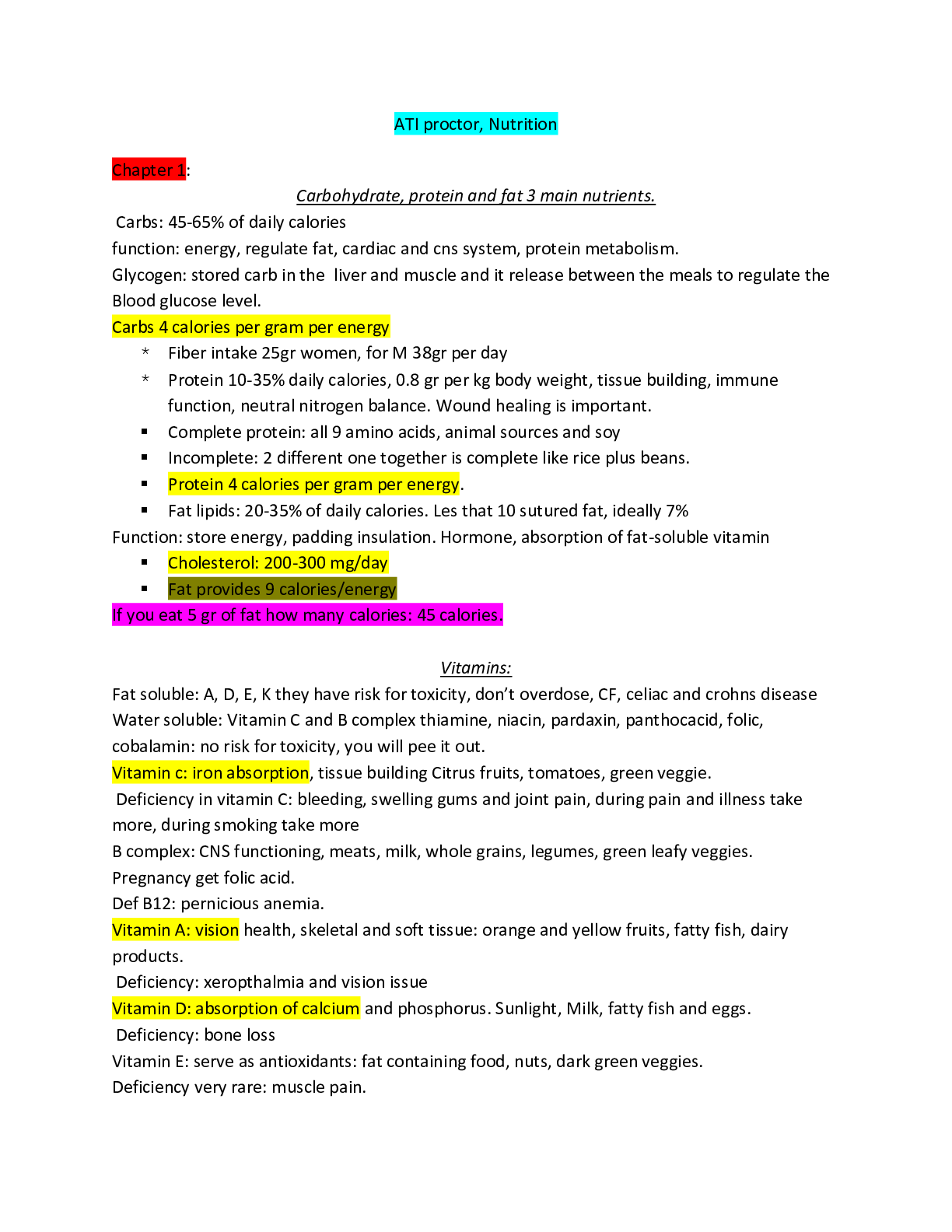
Reviews( 0 )
Document information
Connected school, study & course
About the document
Uploaded On
Nov 28, 2020
Number of pages
13
Written in
Additional information
This document has been written for:
Uploaded
Nov 28, 2020
Downloads
0
Views
65


